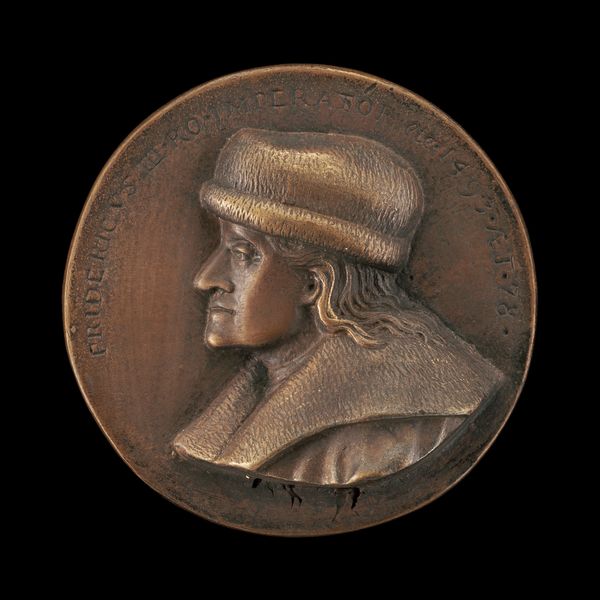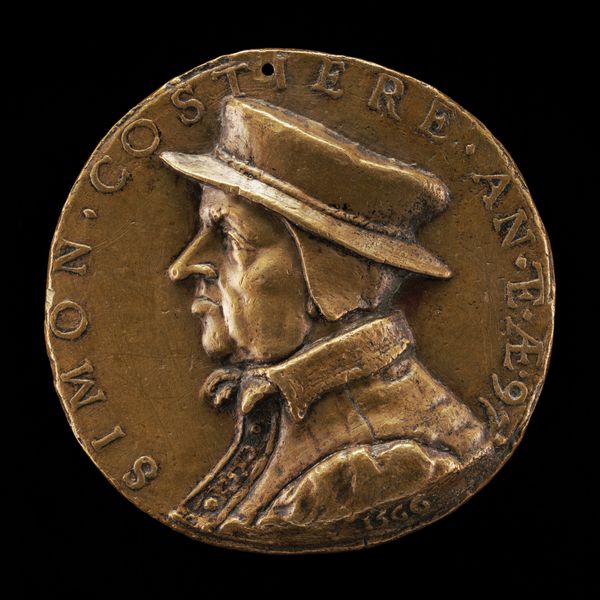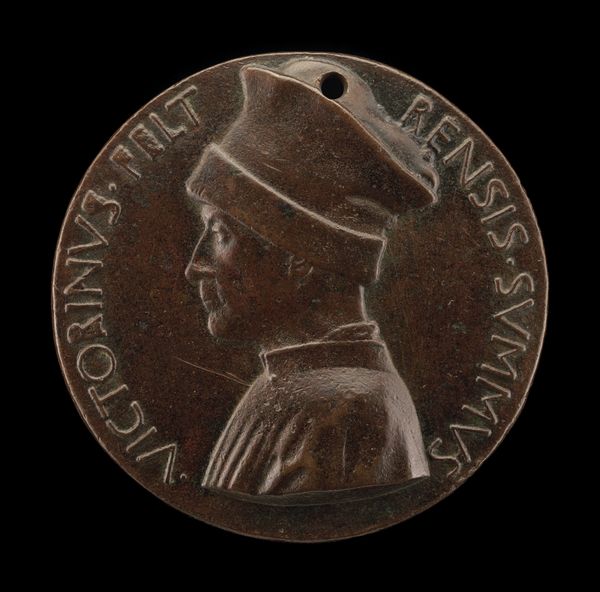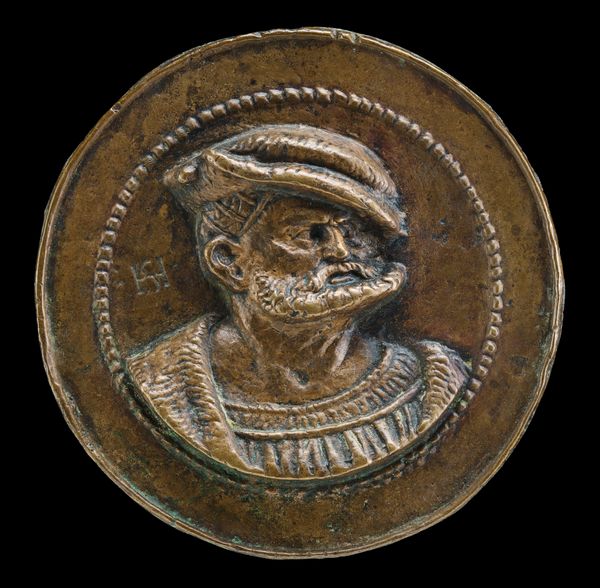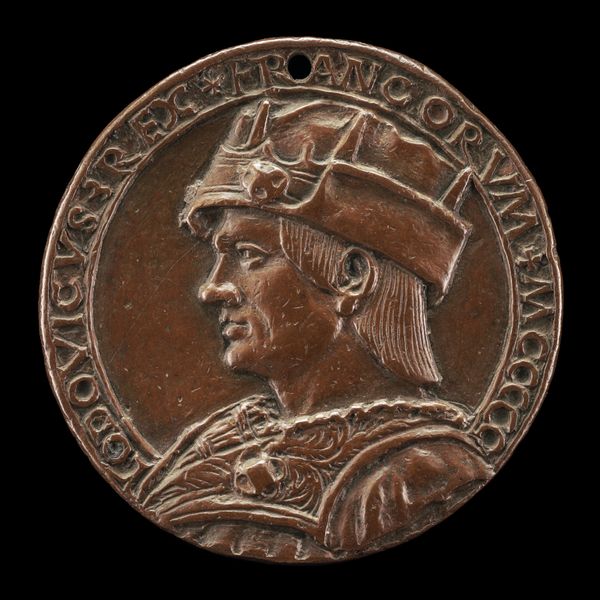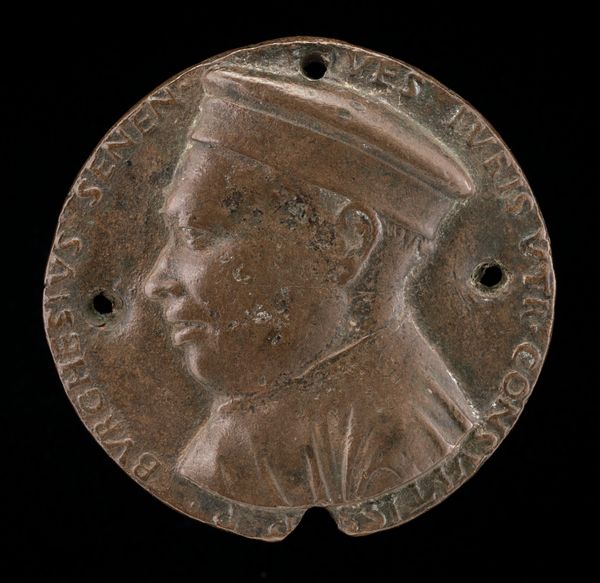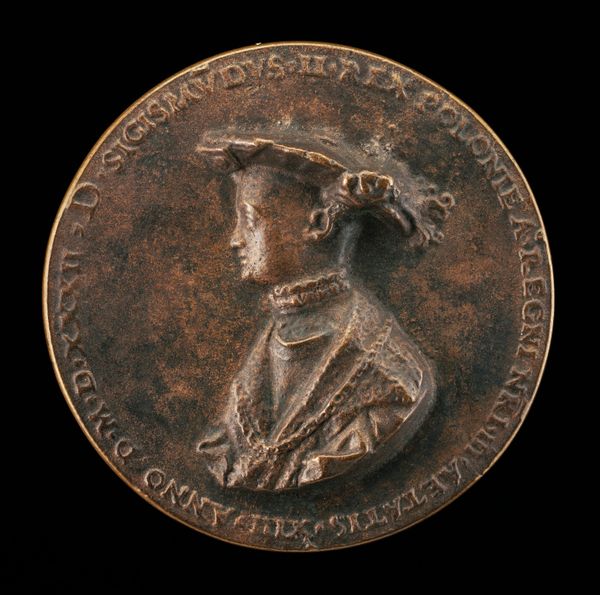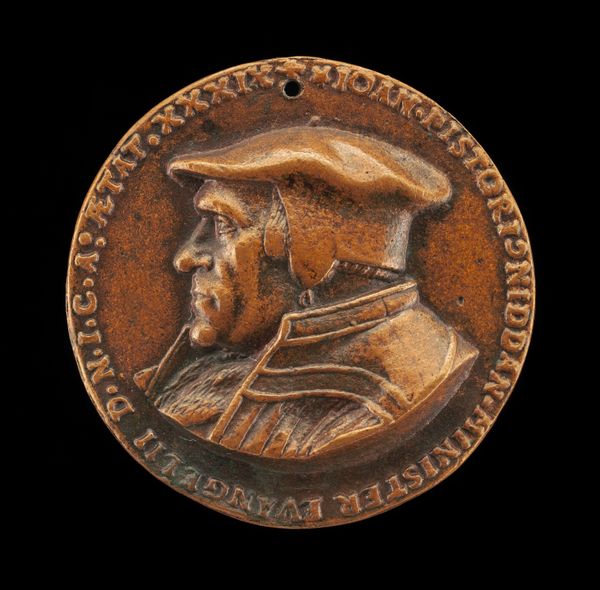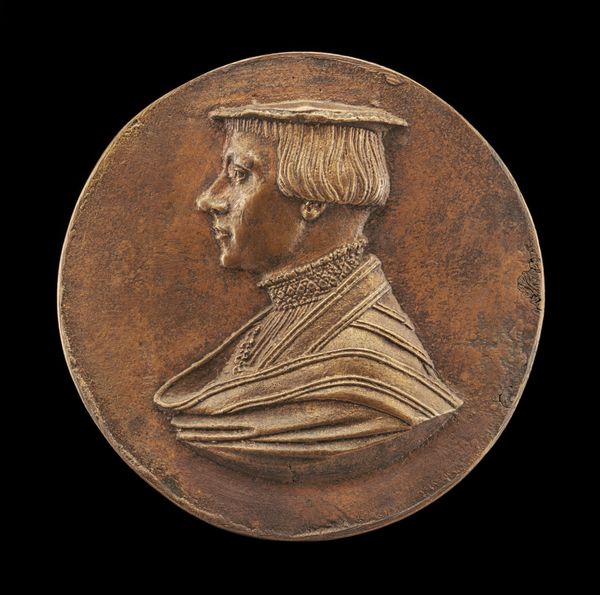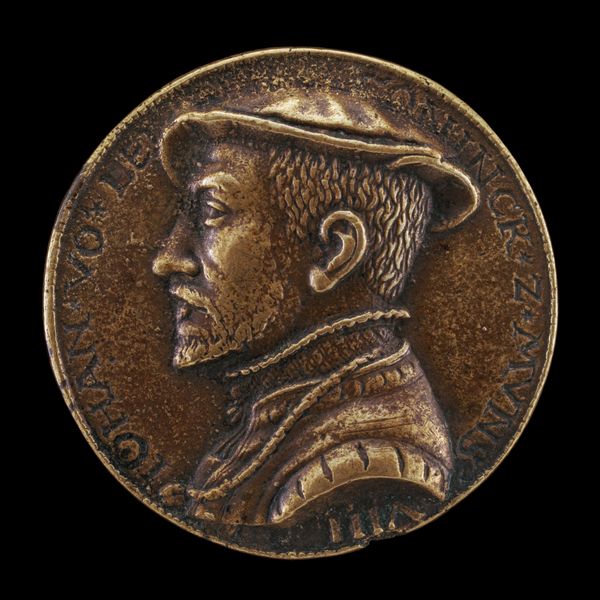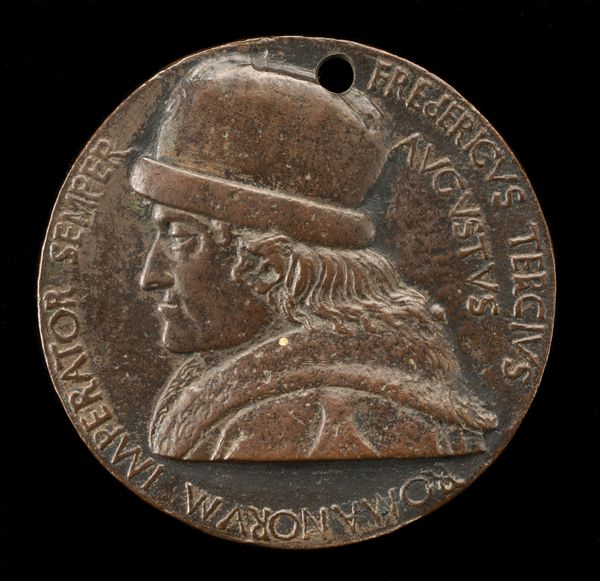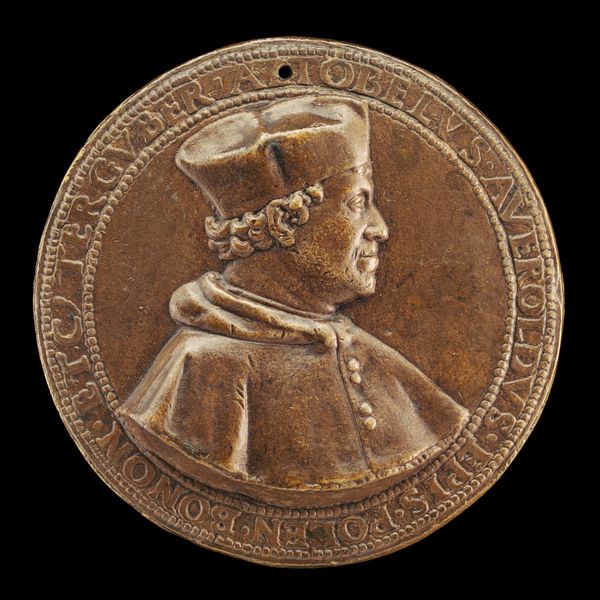
relief, bronze, sculpture
#
portrait
#
sculpture
#
relief
#
bronze
#
ancient-mediterranean
#
sculpture
Dimensions: overall (diameter): 4.53 cm (1 13/16 in.) gross weight: 26.94 gr (0.059 lb.)
Copyright: National Gallery of Art: CC0 1.0
Curator: Here we have a striking bronze relief, a "Self-Portrait" attributed to Alexander von Bruchsal. Editor: It’s aged beautifully; there's a real gravitas in its patina. I'm struck by the directness of the gaze, even in profile. Curator: Indeed. The profile as a form carries its own symbolic weight. In ancient art, the profile often denotes power and authority, a representation meant for widespread distribution, and this harks back to that history. We are confronted with a deliberate construction of self. Editor: And what a 'self' it constructs! Note the sharp angle of the hat, the cut of the garments—the subject is literally framing himself as an individual worthy of attention, pulling at that symbolic association with authority but placing it on…himself? Curator: Precisely. In a self-portrait, the artist consciously manipulates their image, imbuing it with personal and cultural significance. Notice the textures the artist emphasizes: the soft curls against the structured hat, the deliberate imperfections. They’re speaking to aspects of identity beyond mere representation. Editor: I read those imperfections, especially considering that the material is bronze, as a statement. The bronze grants permanence, yet the subtle flaws—the surface scratches—suggest a deliberate undercutting of idealized notions, and acknowledging that no symbol is ever free from subversion or resistance. It shows an acute awareness that even something designed to persist might still break. Curator: I appreciate you raising that point. Considering the historical moment, what narratives do we then place around ideas of self and creation when witnessing their impact on collective cultural memory? Editor: Narratives about power and authority; about identity and representation—we see symbols here as cultural objects that are always actively being created and re-created in their encounter with their intended and unintended publics. This isn't a portrait for posterity so much as an engagement with the act of creating an artist’s identity, with both the intentional and incidental possibilities of meaning embedded. Curator: This bronze holds centuries of artistic intention and viewer interpretations. It asks, even demands, a continued interaction. Editor: Yes, it serves as a potent reminder that art doesn’t just reflect culture—it actively shapes and reshapes our understanding of it.
Comments
No comments
Be the first to comment and join the conversation on the ultimate creative platform.
